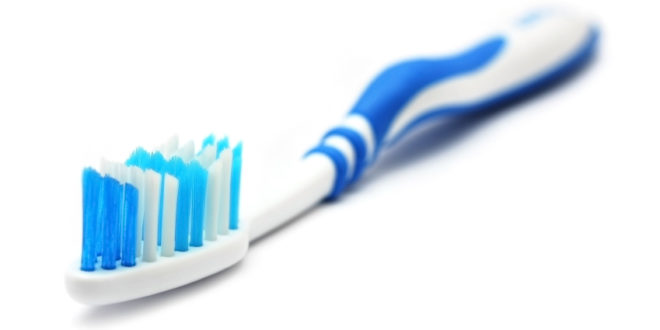Toothbrushes are designed to clean the visible tooth surfaces in your mouth. That sounds like it should be enough, but there is more to the story. Gum disease starts between your teeth where a toothbrush can’t clean. Not only that, most of us think we brush thoroughly. But most people only do a fair job of brushing.
We develop patterns that often miss the same spots each time we brush our teeth. In fact, a single brushing removes an average of 43% of plaque and lasts only seconds. That leaves 57% of the plaque that can cause tooth decay and gum disease. And it does not include the plaque between your teeth.
Is Brushing Your Teeth Enough?
For as long as most of us can remember, we’ve been admonished to brush our teeth at least twice a day, or after every meal if possible. The logic is sound; not brushing your teeth often enough will allow bacteria to accumulate into plaque, which coats the surfaces of your mouth, teeth, and gums. There are over 600 different identifiable kinds of oral bacteria, and when they’re excessively present in your mouth, you’re at a greater risk of developing serious oral health issues. Still, brushing your teeth is only a part of a good oral hygiene routine. If you neglect the rest of it, you are still at risk for oral health problems, even if you brush your teeth three or four times a day.
Flossing is just as Important to Good Hygiene
As you read this, bacteria are currently accumulating inside of your mouth. When you eat, you feed certain bacteria the fuel they need to produce acid, which weakens your tooth enamel until it can no longer protect your teeth from bacteria. This process of tooth decay is not dependent on the amount of sugar or carbs you eat, but rather on the length of time that your teeth are exposed to these substances. When food gets lodged between teeth, it continues to feed the bacteria, which continue to produce acid as a result. While brushing your teeth removes the majority of plaque and food debris, a toothbrush cannot reach the tight spaces between teeth. Flossing at least once a day can remove these food particles and lessen the chance of cavities forming.
Regular dental cleaning
Even if you brush and floss your teeth faithfully, it is important that you have your teeth professionally cleaned on a regular basis. (Of course, if you aren’t quite so meticulous about your oral hygiene, it’s even more important!)
After a thorough cleaning, your teeth will feel smooth and squeaky-clean, and they will probably look a lot brighter too. But professional teeth cleanings aren’t done for looks alone.
Why do your teeth need this kind of attention? Essentially, it’s because over time they tend to build up a layer of plaque (a sticky, bacteria-rich film) and hard deposits (called tartar, or calculus) that are very difficult to remove without special tools. When these deposits are allowed to remain on the tooth surfaces or below the gum line, they provide ideal conditions for bacteria to grow and multiply. The acids produced by some bacteria cause tooth decay and gum disease; if left uncontrolled, this can lead to inflammation and infection of the gums, and possibly influence systemic (whole body) diseases.
Dentists have a special term for preventive procedures like tooth cleaning: prophylaxis, from the Greek word meaning to protect or guard against. In this case, the focus is on preventing tooth decay and gum disease. Performed in conjunction with a routine dental examination, a professional cleaning can go a long way toward controlling these two common maladies.
What is Deep Cleaning (Deep Scaling and Root Planing or SRP)?
If plaque (soft, sticky, bacteria infested film) and tartar (calculus) are left on the teeth, it provides the right conditions for bacteria to thrive. The bacteria irritate the gums, and they bleed easily. You may notice this when you are brushing your teeth or eating. This is the early stage of gum disease called gingivitis. When you have gingivitis, a professional hygienist or a dentist will clean your teeth by scaling and polishing them. Most adults have some degree of gum disease.
If gingivitis not treated, the inflammation will work its way down towards the foundations of the tooth causing a “periodontal pocket”. Again, within the confines of the pocket, the conditions are such that the bacteria can thrive, and cause more damage.
Gum disease can break down the support structures of the teeth so that eventually, they will become loose. Most people may not notice it until it is quite severe and it often has no symptoms. Sadly, the damage to the support structures of the teeth is irreversible. The good news is that if gum disease is caught in time, its progression can be halted and improved upon.
To stop gum disease from progressing, you may be advised to have periodontal therapy, or deep cleaning (scaling). This gets rid of the bacteria in the pocket provides the necessary conditions for healing to occur.
 Be Healthy magazine Health-related monthly magazine
Be Healthy magazine Health-related monthly magazine
